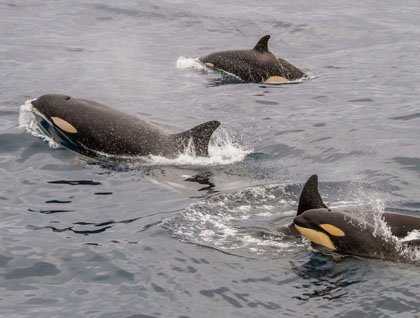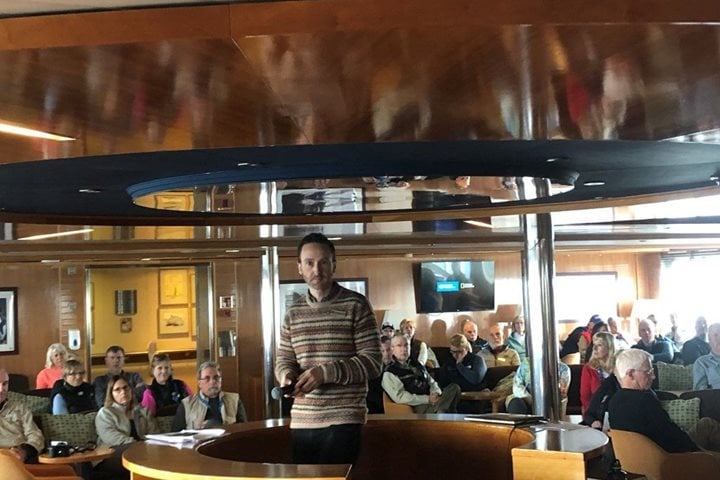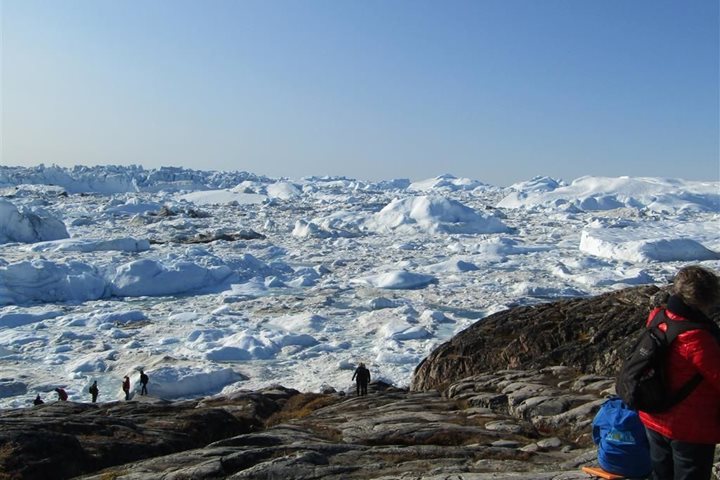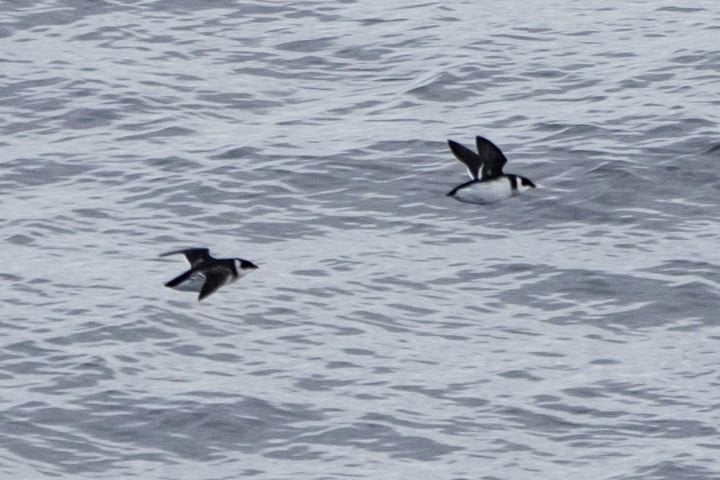Morning activities aboard National Geographic Explorer centered around Padloping Island and the meteorological station established there during World War II by the United States Air Force. The station was an integral part of the D.E.W. (distant early warning) system that stretched from Alaska in the west to Greenland in the east right through this section of Baffin Island. These days the Cold War is but a distant memory and all D.E.W. stations are being removed and all signs of man being are being erased from the natural Arctic landscape.
Afternoon found the ship entering Durban Harbour. Two polar bears seemed as if they were guardians to the inner bay as they intently watched our approach safely perched high above us on steep scree. Pushing further into the bay, National Geographic Explorer anchored in the calm waters of Durbin Harbour itself. Some chose to explore the surrounding tundra by foot, while others opted to get a water-level perspective of the unique area.
Most assuredly the highlight of the entire day came just as dinner was about to be served, with a call from the bridge that killer whales had been sighted. Head Chef Fredrik Wallgren and his gallant galley crew quickly agreed to delay dinner service so that all on board could enjoy this close spectacular encounter. Perhaps a dozen individual killer whales interacted with the ship continuously, their curiosity as intense as our own. Time and again the pod approached both the bow and the stern, giving exceptional views to delighted whale watchers perched on all decks and all levels of the ship.
At the stern a mother brought her young calf to investigate the turbulence of our prop wash. Along the port side an adult female was inverted and lobbing her tail repeatedly while swimming straight toward the ship. Off the bow, curious killer whales slowly paced the ship, surfacing to get a clear glimpse of us.
Two top predators sizing each other up made for an amazing close to our third full day in Nunavut.
From here, dear reader, we journey north.


.jpg?width=106&height=85&mode=crop&scale=both&quality=50)



